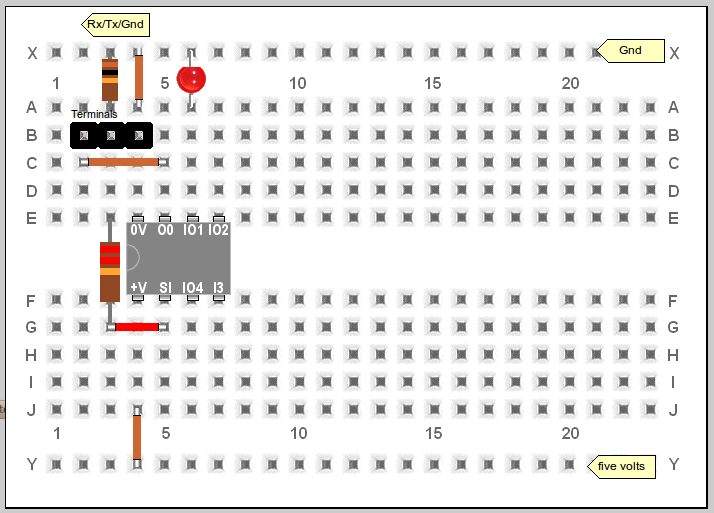| Picaxe Simple Nightlight
|
Over
the last few years, I've watched the steady and terrific
progression of maker-friendly hardware such as the Arduino. But
it was really the simplicity of the Picaxe that lured me in to spend
yet a few more hours thinking of neat devices I might build with their
latest wonders. I'm amazed that even the simplest Picaxe chips
can be made into almost anything you might imagine. And while
there's no limit to the complexity and capability of a design you might
build using the Raspberry Pi, the Picaxe is at the other end of the
spectrum. Yet this modest chip is now at a point where, quite
literally: the simplest single chip version available can be programmed into a
1000+ point datalogger, a clock, or a even thermometer, with no
additional components, running off of nanowatts scavanged from "dead"
AA batteries, at a cost of less than $3 per build. Although it's been many years since I made my first "hello world" blinking light, even within this trivial design, innovation keeps occurring. So here is it: a power-optimized programmable self-calibrating pulse-width-modulation driven light-sensing electro-optical circuit, also known as the simplest single LED nightlight. The Picaxe allows you to take many shortcuts in your design. Since the i/o pins will only sink or source 20mA, LEDs don't need current limiting resistors. Darkness is sensed by the same LED that is lighting up; which is the only external component needed for the circuit. Brown-out detection is disabled during brief 288ms naps, thereby reducing current consumption down to 10uA or less, and allowing the device to run on 1.8v or less. During development, I was fooled into thinking the device was malfunctioning when it didn't reset after disconnecting the batteries; so be sure to short the power leads on the device (after disconnecting the batteries) or give it 10+ seconds without power to let spare capacitance dissipate. The
design contains 2 resistors and a
programming header. While these aren't necessary, they only add a
few cents to the design, and the temptation to program and reprogram a
nightlight ad-nauseum was just too great for me to resist. (this
self-realization should probably bother me more than it does!) For me, this simplest of projects demonstrates how eventually, all designs become
software. And all software is a work-in-progress, since
there's always something else that can be optimized if I have a few
more minutes. This minimalist nightlight design consists of only a Picaxe,
an LED, and a battery, yet it really can be reprogrammed into the datalogger,
clock, and thermometer that I mentioned. Add a single length of wire, and you can use
the "touch" command to detect user input; a perfect complement for the single-bit output that the LED provides. Electronic design doesn't get much more
minimalist than a Turing machine connected to single bit input and
output lines. Yet as processing power increases, this design can
accomplish anything. The following schematic/layout drawing was generated from this file using PEBBLE (Picaxe Electronic Bread Board Layout Emulator - V3.1). Parts count:
My schematic is above, and here is the code.
My style/documentation is pretty rigorous, but I strongly advocate good coding practice regardless
of the machine; all software only becomes more obfuscated over time. Some noteworthy aspects of the program:
This code is explicitly released under the GPL. And this page is licensed under a Creative Commons Attribution 2.5 License. Write me if you find this project interesting. Link to this page if you find it relevant.. Warning, may cause loss of time. This project is provided without any warranty
and probably isn't suitable for anything. Read or write a comment on the hardware projects |
